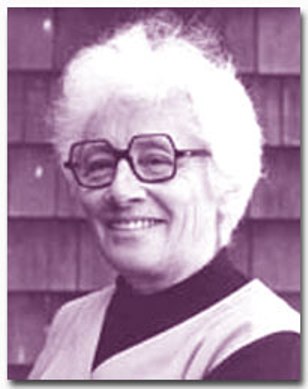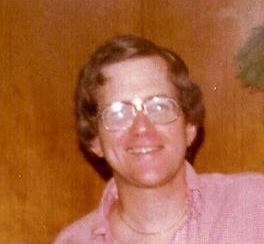Or, Abraham Creek, Abraham Lincoln and the Civil War
Genealogical research never ceases to provide a glimpse into
the past and the quixotic nature of chance. Researching my pioneering
families in Clay County, Missouri, provided just such an intriguing look
at how fate, nature, luck, choice may result in unexpected alliances
and unfortunate severing of those same relationships.
To begin our look at the forces at work in this little
tale, I must first permit you to explore with me the establishment of
this northwestern corner of Missouri. French trappers first settled,
temporarily, in this area of the state about 1800 on Randolph Bluff.
This part of Missouri is perhaps one of the most desirable land masses
in the United States, lush with forested land, originally comprised of
oak, hickory, ash, walnut, hackberry and cottonwood trees replete with
waterways made up of creeks and tributaries deriving from the Missouri
River. Clay County fronts nearly fifty miles of this grand river,
providing more than adequate water and fertile river bottom soil for
farming. Early in its history, Clay County’s water aquifers could be
attained by merely sinking a well to some thirty feet. The land is
typically rolling meadows, interrupted here and there by precipitous and
rocky bluffs. The weather is, for the most part, fully affected by all
four seasons of the year: cool, breezy Springs, warm and rainy
Summers, gloriously painted in the Fall with the many hues afforded by
its rich forests, and Winters that bring necessary snow in most years to
kill off undesired pests and provide additional melt to enrich the
essential life-flow of water.
The first permanent settlers built their cabins and broke
ground for their farms in the year of 1819. Its official organizational
documents are dated 2 January 1822. Named in honor of United States
Representative Henry Clay of Kentucky who also served as a member of the
United States Senate and, ultimately, as United States Secretary of
State. The majority of pioneers in Clay County came from Kentucky,
Tennessee, and Virginia, states deeply entrenched in the practice of
slaveholding and many of those pioneers brought their slaves and
traditions with them.
The first orders of business in creating a new county
includes the establishment of a manner in which it may be governed and
its citizens protected, taxed and afforded a proper infrastructure for
the conduct of personal and commercial business. Thus, early in 1822 a
county court was established with appropriate judicial, clerical and
policing appointments made. This brings us to the entry of our first
element of fate, the appointment of Mr. David Todd as judge to the First
Circuit Court in Clay County.
To quote from
History of Clay and Platte Counties, Missouri,
“Judge David Todd was born in Fayette county, Ky., in 1790. He came to
Missouri at an early day and located at Old Franklin, Howard county. He
was well known and long remembered as an able and upright judge and a
pure man. Judge Todd died at Columbia, Boone county, in 1859.”
One anecdotal story concerning Judge Todd’s administration
of his duties in this History has to do with the last recorded
“affront” to the citizens of Clay County by native Indians. In May of
1823 a “roving band of Iowa Indians” on their way to the Grand River
country took a liking to some horses “owned by Ezekiel Huffman and other
citizens” and drove them along with them to the encampment on Grand
River, “just above where Brunswick now stands.”
Judge Todd issued a warrant directing the sheriff of
Chariton county, where information from the chiefs of the tribe
determined the culprits to be then located, to arrest the three horse
thieves. The names of the Indians were: “given as O'ha-pa-bar-lar, or
Buffalo Nose; Mon-to-kar, or White Briar, and T on-tar-ru-r/cue-clze, or
Where he is Crossing. Subpoenas were also issued for War-sen-nee, or
The End of Medicine; War-hu-kea, or Moccasin Awl; Monk-she-Icon-nah, a
Valiant Man, Won-chee-mon-nee, “chiefs of the said Ioway nation of
Indians.”
As luck would have it, the Indians were apprehended,
handed over to Judge Todd for arraignment at Fayette on the 5th of July.
Brought again before Judge Todd on the 7th of July, they were remanded
to the custody of the Clay County sheriff to await trial.
Unfortunately, the 'slippery devils' managed to escape on the 8th of
July, and although not again apprehended the stolen horses were
recovered and returned to their rightful owners.
An interesting anecdote, but not the central focus of this
little story about the assimilation of bodies corporeal that have, by
their familial relationships, the ingredients for the old adage:
“history makes for strange bedfellows.”
From the
History of Clay County, Missouri (Author: William H. Woodson, published by Historical Publishing Company, Topeka - Indianapolis, 1920.) we find:
“The first circuit court was held in Clay County at the house of John Owens, in Liberty, March 4, 1822. David Todd, an uncle of the wife of Abraham Lincoln, who was Mary Todd, was judge; William L. Smith, clerk; Hamilton R. Gamble, circuit attorney, and John Harris, sheriff.”
And later:
“John Harris was a lineal descendant of Mary Jefferson, sister of Thomas Jefferson; Mary Jefferson married Col. John Turpin and her daughter, Obedience, married Col. John Harris.”
Now, enters my 4th Great Grandfather Abraham Creek, son of a
German architect and brick mason, Killian Creek (original Guilliam
Grieg, with the Germanic name anglicized) whose fame includes both
Killian Kreek’s Mill, built in Barren County, Kentucky in 1799 and
listed on the National Register of Historic Places, and the first Gibson
County (Indiana) courthouse built in Princeton, Indiana in 1815.
Abraham Creek was one of the earliest pioneers in Clay County, Missouri,
whose name appears a couple of times in conjunct with both David Todd
(as aforesaid, Mary Todd Lincoln’s uncle) where he served as one of the
twelve jurors in the earliest court case in the county:
“The next term of the circuit court was in July following
(1823), and only one jury trial, that of the State vs. Jonathan Camron,
who had been indicted for affray. A jury of twelve good and true men
were selected to try the defendant; they were Abijah Means, Richard
Chaney, Abraham Creek, John Bartleson, James Gladden, Francis T.
Slaughter, Enos Vaughn, Andrew Copelin, John Carrell, Matthew Averett,
Eppa Tillery and Samuel Magill, who after hearing the evidence,
instructions of the court, and arguments of counsel, retired, but soon
returned with a verdict, “We, the jury, find the defendant not guilty”.
(Also from the History of Clay County, Missouri, by Woodson.)
…and later we find that Abraham Creek was a neighbor to another Abraham,
“Court Proceedings in 1826. In May the first steps were taken
to build a court house; Wm. Averett was allowed $30 per year for the
support of his insane son; and Abraham Lincoln (uncle of the "martyr President"), Reuben Tillery and Abraham Creek were appointed reviewers of a road from Liberty to Estes' mill, on Fishing river.
Abraham Creek was the father of Jacob Haudenscheldt (or
Howdeshell) Creek who married Virginia Lee Younger, the daughter of
Colonel Charles Lee Younger and sister to Henry Washington Younger.
Henry Washington Younger was a businessman with varied commercial
enterprises: a mercantile business, a livery stable and extensive
farmlands worked by family slaves. His grandfather, Joshua Logan
Younger, was with George Washington during the exhaustive ordeal at
Valley Forge and later critically wounded serving under Washington at
the Battle of Brandywine. His grandmother was related to the famous Lee
family of Virginia, reputed by many to be the daughter of Richard Henry
Lee and Anne Aydelott. (She was not named in the Will of Richard Henry
Lee, as she predeceased him by some seven years, a fact that causes
some members of the Lee family to dispute her heritage.) But, more
germane to this article, Henry Washington Younger was the father of
Thomas Coleman, James Hardin, John Harrison and Robert Ewing Younger,
better known as Cole, Jim, John and Bob Younger or, simply, as the
Younger Gang. Henry Washington Younger’s slaughter at the hands of a
Union thug, Capt. Irvin Walley and his gang of unscrupulous “soldiers”
was the impetus that drove Cole Younger to determine it necessary to
join sides in the Civil War.
Most know of the history of the Younger Gang both during
the War as Cole rode with William Clarke Quantrill along with Creek
cousins, a couple of brothers-in-law and various friends including Frank
and Jesse James and afterwards as the former “bushwhackers” became
“civilly disobedient” in their outrage against the scourge of
carpetbaggers that swarmed the South following the end of the War.
Thus, the relatives of Abraham Creek, Abraham Lincoln (the
uncle to Honest Abe), and David Todd (uncle to Mary Todd Lincoln) would
find themselves embroiled in the bloodiest war in the history of the
United States with much of the action centering in and around Clay
County, Missouri. The juxtaposition of friendly neighbors, busy at work
doing what must be done to establish a thriving community became a
hotbed of hatred, revenge, and outrage that mystifies us even today.
A quirk of fate, a chance encounter….
Click on author's byline for bio and list of other works published by Pencil Stubs Online.



















